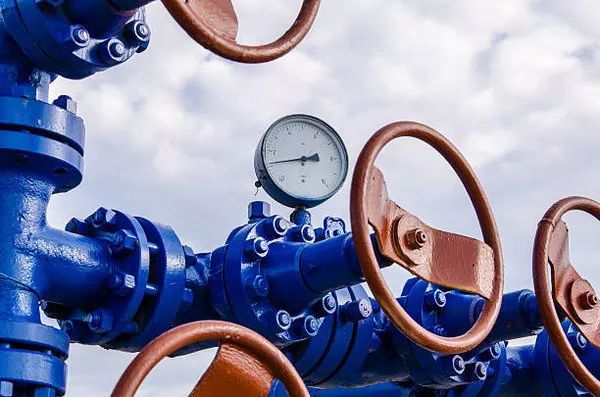A fuel pressure gauge is a vital instrument used to measure and monitor the pressure of fuel within a vehicle’s fuel system. It helps ensure optimal engine performance, fuel efficiency, and longevity by providing real-time pressure readings. This device is especially crucial in fuel-injected engines, where maintaining the correct fuel pressure is essential for proper combustion and engine efficiency.
Importance of a Fuel Pressure Gauge
Fuel pressure plays a critical role in the performance of an internal combustion engine. If the pressure is too low, the engine may suffer from inadequate fuel delivery, leading to issues such as misfiring, loss of power, and even stalling. Conversely, excessive pressure can result in engine flooding, poor fuel economy, and increased emissions. A fuel pressure gauge helps diagnose these problems before they become severe, making it an essential tool for mechanics, car enthusiasts, and performance tuners.
Working Principle of a Fuel Pressure Gauge
The fuel pressure gauge operates on a simple mechanical or electronic principle, depending on its type. The gauge is connected to the fuel system, typically at the fuel rail, fuel pump, or fuel filter, and measures the pressure of the fuel being delivered to the engine.
Mechanical Fuel Pressure Gauge: These gauges use a bourdon tube or diaphragm mechanism that expands or contracts based on the pressure of the fuel. The movement is then translated into a needle position on a dial, indicating the pressure reading.
Electronic Fuel Pressure Gauge: These use a pressure sensor that converts fuel pressure into an electrical signal. The signal is then processed and displayed digitally on a screen, providing precise and real-time pressure readings.
Types of Fuel Pressure Gauges
Fuel pressure gauges come in different types depending on their design, functionality, and applications. The primary types include:
1. Mechanical Fuel Pressure Gauges
Analog Display: These gauges have a simple needle-and-dial system and are commonly found in older vehicles and race cars.
Direct Connection: They connect directly to the fuel system without requiring additional wiring or sensors.
Durability: Mechanical gauges are generally more robust and can withstand harsh conditions.
2. Electric Fuel Pressure Gauges
Digital Display: These gauges provide a digital readout of the fuel pressure, making them easier to read and more precise.
Remote Monitoring: Many modern electronic gauges allow remote monitoring via sensors, reducing the need for direct connection.
Advanced Features: Some electronic gauges come with warning systems, data logging, and integration with vehicle diagnostics.
3. Liquid-Filled Fuel Pressure Gauges
Dampens Vibrations: These gauges contain liquid (usually glycerin) that helps absorb vibrations, providing stable and accurate readings.
Longer Lifespan: The liquid protects the internal components from wear and tear, increasing durability.
4. Fuel Pressure Test Kits
Portable and Versatile: These kits include multiple adapters, hoses, and fittings to check fuel pressure across different vehicles and fuel systems.
Used for Diagnosis: Mechanics use these kits to diagnose issues related to fuel delivery.
Applications of a Fuel Pressure Gauge
Fuel pressure gauges are used in various applications, including:
Automotive Diagnostics and Performance Tuning
- Ensures proper fuel delivery to the engine
- Helps identify fuel pump or injector issues
- Essential for high-performance vehicles that require precise fuel pressure tuning
Industrial and Commercial Equipment
- Used in generators, forklifts, and construction machinery to monitor fuel pressure and optimize performance
Aviation and Marine Applications
- Aircraft and boats rely on stable fuel pressure for safe and efficient operation
Motorsports and Racing
- Racing vehicles require precise fuel pressure control for maximum power output and efficiency
How to Install a Fuel Pressure Gauge
Installing a fuel pressure gauge varies depending on the vehicle type and gauge design. Here’s a general step-by-step guide:
Choose the Right Location: Identify a suitable connection point, usually the fuel rail, fuel filter, or near the fuel pump.
Ensure Safety: Turn off the engine and relieve fuel system pressure to prevent leaks.
Install the Gauge:
- For mechanical gauges, attach the gauge using appropriate fittings and ensure a secure connection.
- For electronic gauges, install the pressure sensor and connect it to the gauge display.
Test for Leaks: Start the engine and check for fuel leaks around the connection points.
Calibrate and Monitor: Adjust settings if necessary and regularly check the gauge for accurate readings.
Common Issues and Troubleshooting
Fluctuating Readings:
- Caused by fuel pump issues or clogged fuel filters.
- Solution: Inspect and replace faulty components as needed.
Low Fuel Pressure:
- Symptoms include engine hesitation, loss of power, and difficulty starting.
- Solution: Check for fuel leaks, weak fuel pump, or clogged injectors.
High Fuel Pressure:
- Leads to excessive fuel consumption and rich air-fuel mixtures.
- Solution: Inspect the fuel pressure regulator and return lines.
Gauge Not Responding:
- Could be due to sensor failure or electrical issues (in electronic gauges).
- Solution: Check wiring connections and replace faulty sensors if necessary.
Benefits of Using a Fuel Pressure Gauge
Improves Engine Performance: Ensures the engine gets the right amount of fuel for optimal operation.
Prevents Engine Damage: Detects problems early, preventing costly repairs.
Enhances Fuel Efficiency: Helps maintain the correct air-fuel ratio for better mileage.
Essential for Tuning and Racing: Allows fine-tuning of fuel delivery for performance vehicles.
Conclusion
A fuel pressure gauge is an essential tool for monitoring and maintaining the health of a vehicle’s fuel system. Whether used for routine diagnostics, performance tuning, or troubleshooting, it provides crucial data that helps ensure efficient and reliable engine operation. By choosing the right type of gauge and properly installing and maintaining it, vehicle owners and mechanics can significantly enhance fuel system performance and extend engine lifespan.

